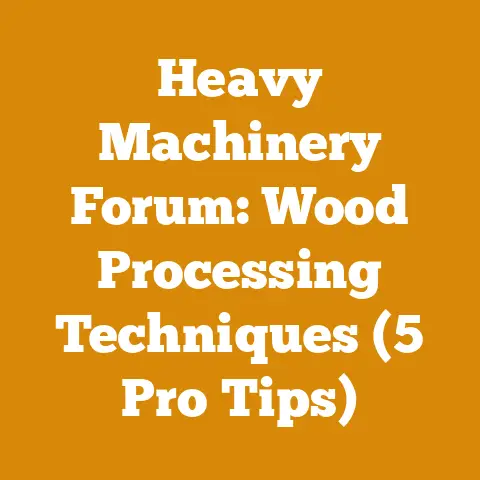Block Off Plate for Fireplace Insert (5 Pro Tips for Efficiency)
Let’s challenge a common misconception right off the bat: many homeowners believe that simply installing a fireplace insert automatically makes their heating situation far more efficient. While inserts are a vast improvement over open fireplaces, their efficiency can still be dramatically improved. The secret? A well-fitted block off plate. I’ve spent years cutting, splitting, and burning wood, and I can tell you firsthand that a block off plate is one of the most cost-effective upgrades you can make. This guide will provide five pro tips to maximize your fireplace insert’s efficiency with a block off plate.
Block Off Plate for Fireplace Insert: 5 Pro Tips for Efficiency
As someone who’s wrestled with inefficient heating systems for longer than I care to admit, I understand the frustration of watching heat disappear up the chimney. I remember one particularly harsh winter where my wood consumption was through the roof, and my house felt like an icebox. That’s when I started researching block off plates, and the difference they made was remarkable. It’s not just about saving money; it’s about creating a more comfortable, sustainable heating source.
1. Understanding the Need for a Block Off Plate
Many people mistakenly believe that their fireplace insert seals off the chimney completely. However, the area above the insert, within the fireplace cavity and up into the flue, is often open. This creates a pathway for heated air from your home to escape up the chimney, even when the insert is running. That’s because of the stack effect, where warm air naturally rises.
A block off plate seals off this open area, preventing the escape of warm air and improving the efficiency of your fireplace insert. Think of it like insulating your attic; it’s a barrier that keeps the heat where you want it. Without a block off plate, your insert is essentially fighting against the natural convection currents pulling heat out of your house.
-
Benefits of a Block Off Plate:
- Reduces heat loss up the chimney.
- Increases the efficiency of your fireplace insert.
- Prevents cold drafts from entering your home.
- Reduces overall heating costs.
- Improves indoor air quality by minimizing backdrafts.
-
Why it Matters: The average chimney can lose a significant amount of heat per hour without a block off plate. Studies show that up to 30% of the heat generated by your fireplace insert can be lost through an unsealed chimney. A block off plate can reduce this loss dramatically, sometimes by as much as 80%.
Takeaway: A block off plate is essential for maximizing the efficiency of your fireplace insert by preventing heat loss up the chimney.
2. Choosing the Right Material for Your Block Off Plate
Selecting the appropriate material for your block off plate is crucial for its effectiveness and longevity. Several options exist, each with its pros and cons. I’ve experimented with different materials over the years, and I’ve found that the best choice depends on your specific fireplace setup and budget.
-
Sheet Metal (Steel or Aluminum): Sheet metal is a popular choice due to its affordability and ease of fabrication. Steel is more durable but prone to rust, while aluminum is lightweight and rust-resistant but less strong. I recommend using at least 18-gauge steel or a thicker gauge of aluminum for adequate strength.
- Pros: Affordable, easy to cut and shape.
- Cons: Steel can rust, aluminum is less strong.
- Cost: $20 – $50 per sheet (depending on size and gauge).
-
Rigid Insulation Board (Mineral Wool or Ceramic Fiber): Rigid insulation boards offer excellent thermal resistance and are fireproof. Mineral wool is a good choice for its combination of insulation and affordability. Ceramic fiber offers even better insulation but is more expensive.
- Pros: Excellent insulation, fireproof.
- Cons: Can be more expensive than sheet metal, may require additional support.
- Cost: $30 – $80 per sheet (depending on size and material).
-
Combination Approach: I often use a combination of materials, such as a sheet metal base with rigid insulation board attached to the top. This provides both structural support and excellent insulation.
- My Personal Experience: In my own fireplace, I opted for an 18-gauge steel sheet as the base, covered with a 2-inch thick mineral wool insulation board. This combination has proven to be incredibly effective at blocking heat loss and preventing drafts.
-
Important Considerations:
- Fire Resistance: Ensure the material is fire-resistant and rated for high temperatures.
- Ease of Cutting and Shaping: Choose a material that you can easily cut and shape to fit your fireplace opening.
- Durability: Consider the long-term durability of the material and its resistance to moisture and corrosion.
Takeaway: Choose a durable, fire-resistant material for your block off plate, considering a combination of sheet metal and rigid insulation for optimal performance.
3. Precise Measurement and Custom Fabrication
Accurate measurements are paramount when creating a block off plate. A poorly fitted plate will negate its purpose, allowing heat to escape and cold air to enter. Take your time and measure carefully, accounting for any irregularities in the fireplace opening.
-
Step-by-Step Measurement Guide:
- Measure the Width: Measure the width of the fireplace opening at the top, middle, and bottom. Use the smallest measurement as your guide.
- Measure the Height: Measure the height from the top of the fireplace insert to the smoke shelf (the area where the chimney flue begins). This is crucial for creating a tight seal.
- Account for the Flue: Measure the diameter or dimensions of the chimney flue. You’ll need to create an opening in the block off plate to accommodate the flue.
- Irregularities: Note any irregularities in the fireplace opening, such as protruding bricks or uneven surfaces. Adjust your measurements accordingly.
-
Fabrication Techniques:
- Cutting the Material: Use appropriate cutting tools for your chosen material. Sheet metal can be cut with metal shears or a jigsaw with a metal-cutting blade. Rigid insulation boards can be cut with a utility knife or saw.
- Creating the Flue Opening: Use a hole saw or jigsaw to cut the opening for the chimney flue. Ensure the opening is slightly larger than the flue to allow for expansion and contraction.
- Sealing the Edges: Use high-temperature silicone sealant to seal the edges of the block off plate against the fireplace opening. This will prevent air leaks and ensure a tight seal.
-
Pro Tip: Create a template out of cardboard before cutting your final material. This allows you to test the fit and make any necessary adjustments before committing to the final cut.
-
Case Study: A local homeowner attempted to install a block off plate without accurate measurements. The resulting gaps allowed for significant heat loss, negating the benefits of the insert. After re-measuring and fabricating a properly fitted plate, they experienced a noticeable improvement in heating efficiency and a reduction in wood consumption.
Takeaway: Precise measurements and careful fabrication are essential for creating a block off plate that effectively seals off the chimney and maximizes the efficiency of your fireplace insert.
4. Installation Best Practices and Sealing Techniques
Proper installation is just as important as accurate fabrication. Even the most well-made block off plate will be ineffective if it’s not installed correctly. I’ve seen many DIY installations that failed due to poor sealing and inadequate support.
-
Step-by-Step Installation Guide:
- Prepare the Fireplace: Clean the fireplace opening thoroughly, removing any loose debris or soot.
- Position the Block Off Plate: Carefully position the block off plate above the fireplace insert, ensuring the flue opening aligns with the chimney flue.
- Secure the Plate: Use metal screws or rivets to secure the block off plate to the fireplace opening. If using rigid insulation board, you may need to build a support frame to hold it in place.
- Seal the Edges: Apply a generous bead of high-temperature silicone sealant around the edges of the block off plate, where it meets the fireplace opening. Pay particular attention to any gaps or irregularities.
- Seal the Flue Opening: Use high-temperature rope gasket or silicone sealant to seal the gap between the block off plate and the chimney flue. This will prevent air leaks around the flue.
-
Sealing Techniques:
- High-Temperature Silicone Sealant: Use a sealant that is specifically designed for high-temperature applications, such as fireplace inserts and stoves.
- Rope Gasket: Rope gasket is a fibrous material that can be compressed to create a tight seal. It’s ideal for sealing irregular gaps.
- Backer Rod: Use backer rod to fill large gaps before applying sealant. This will reduce the amount of sealant needed and improve the seal’s effectiveness.
-
Common Mistakes to Avoid:
- Using the Wrong Sealant: Regular silicone sealant will not withstand the high temperatures of a fireplace and will quickly degrade.
- Ignoring Small Gaps: Even small gaps can allow significant heat loss. Pay attention to detail and seal all gaps thoroughly.
- Inadequate Support: Ensure the block off plate is adequately supported to prevent it from sagging or shifting over time.
Takeaway: Proper installation and sealing are crucial for ensuring the effectiveness of your block off plate. Use high-temperature materials and pay attention to detail to create a tight, airtight seal.
5. Long-Term Maintenance and Inspection
A block off plate is not a “set it and forget it” solution. Regular maintenance and inspection are necessary to ensure its continued effectiveness and safety. Over time, the sealant can degrade, and the plate can shift due to temperature fluctuations.
-
Inspection Schedule:
- Annual Inspection: Inspect the block off plate at least once a year, preferably before the start of the heating season.
- Post-Season Inspection: Inspect the plate again after the heating season to identify any damage or wear.
-
Maintenance Tasks:
- Check the Sealant: Inspect the sealant for cracks or degradation. Reapply sealant as needed.
- Inspect the Plate: Check the plate for any signs of damage, such as rust, corrosion, or warping. Repair or replace the plate as needed.
- Clean the Area: Clean the area around the block off plate to remove any soot or debris.
-
Safety Considerations:
- Carbon Monoxide: Ensure your home is equipped with working carbon monoxide detectors.
- Chimney Sweeping: Have your chimney professionally swept at least once a year to remove creosote buildup.
- Proper Ventilation: Ensure adequate ventilation in your home to prevent the buildup of carbon monoxide.
-
Troubleshooting:
- Drafts: If you notice drafts coming from the fireplace, inspect the block off plate for gaps or leaks.
- Smoke Smell: If you smell smoke in your home, it could indicate a problem with the chimney or the block off plate. Consult a professional chimney sweep or fireplace installer.
-
My Experience: I make it a habit to inspect my block off plate every spring and fall. I’ve caught minor sealant cracks early on, preventing them from becoming major heat loss issues. This simple maintenance routine has extended the life of my block off plate and ensured its continued effectiveness.
Takeaway: Regular maintenance and inspection are essential for ensuring the long-term effectiveness and safety of your block off plate. Address any issues promptly to prevent heat loss and maintain a safe heating environment.
In conclusion, installing a block off plate for your fireplace insert is a worthwhile investment that can significantly improve your heating efficiency and reduce your heating costs. By following these five pro tips – understanding the need, choosing the right material, precise measurement and fabrication, installation best practices, and long-term maintenance – you can maximize the benefits of your block off plate and enjoy a warmer, more comfortable home. Remember to prioritize safety and consult with a professional if you have any concerns. Happy burning!






